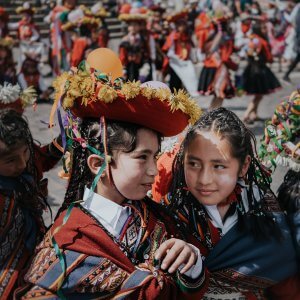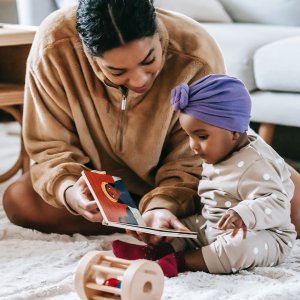How to explain what culture is to a child?
This is a question every parent grapples with as soon as their kids can phrase their curious questions. Advancement in the field of science and technology has made the world into a giant global village. Children today are brought up in a melting pot of ethnicities, religions, and cultures.
Children are naturally inquisitive. They want to explore their world and ask many questions to understand the similarities and differences. Being instinctively curious, children might start conversations and ask questions due to their genuine interests. Sometimes the question might faze you or get you worried about hurting sentiments. But these inquiries create brilliant opportunities to start conversations about race, cultures, and traditions in a non-judgmental way and introduce them to their multicultural environment.
Doing so at an early age and in unbiased ways will help open up cultures around the world for kids to explore and accept as a norm. Such a cultural awakening will help them grow into patient and empathetic individuals willing to learn the good from multiple ethnicities while bidding farewell to discrimination and prejudices.

Research suggests that babies develop sensitivity to physical differences in human features as young as three months. By nine months, stranger anxiety begins to grow. Now stranger anxiety is just a phase; it is developmentally appropriate for babies and even resolves over time. But another study shows that children develop preferences for groups signifying their own culture and language by three years of age if they remain unexposed to multicultural environments.
The fact that various cultures co-exist in the world is a significant one. It can become a celebration or a taboo, depending on how we discuss it with our children. Approaching the subject delicately and with subtlety can help bring up a generation that is aware, inclusive, and empathetic. And isn’t that a massive win for any parent?
What is culture?
In a social context, culture is defined as the customary beliefs, social forms, and material traits of a racial, religious, or social group.
Culture helps define and develop our identity. This process occurs because of the traditions we experience and explore from childhood. The culture we notice growing up ensures that we are exposed to specific societal rules, arts, beliefs, laws, cuisines, etc. The customs and behavior of people, their everyday habits, their social values, and the language and religion of a particular set of people in a society are derived from the culture they follow.
For a young child, culture starts presenting itself at home in the form of matzo ball soup served for dinner, prayers sung in a particular dialect, or festivals celebrated at home with much aplomb. Dressing up in a specific way for special occasions, braiding hair in a certain way, and many such daily interactions or particular events.

And here’s why we should strive to teach kids about culture. Children are amazingly curious and surprisingly intelligent. What they notice within their homestead, they evaluate for similarities and differences outside. Human beings are all unique and different. Children know that too. Sometimes parents believe they should delay conversations about other cultures until kids attain a certain age of maturity. Still, children become conscious of the difference in how people look and behave pretty early and are ready for such conversations even before we know.
Don’t believe us? Let’s think of the times your child has noticed something different about their friends or a random stranger on the street and pointedly asked you a question. You might have felt uncomfortable at the moment, but your child was simply interested and looking to derive knowledge.
Although children look for connection in what is familiar, they are also keen on learning and always ready to imbibe new values, get accustomed to things that seem new, and accept them as a part of their ordinary lives. The earlier, the better; therefore, early is the perfect stage to teach kids about culture. Discuss culture with them as toddlers, do culture activities for preschoolers, and take up the initiative of teaching culture to kindergarten kids. The younger we start, the more empathetic children we’ll be able to raise. The more positive opportunities we provide to our little ones, the more appreciative they will grow of the cultural pride this amazing world bestows on them.
Fun ways to teach kids about culture
Learning about the captivating world we live in with its multicultural heritage, fascinating people with diverse traditions, different cuisines, musical inclinations, thought processes, and values is a beautiful gift for any child. And, as their first teachers and mentors, there is so much cultural exposure we can and should provide. Here are a few of our favorite activities you can practice at home to start the conversation about culture with your children.
1. Cultural cook-offs—Taco Tuesdays!

Pizza nights, mama mia!
Cooking with our kids has so many benefits in itself. We teach them so much while measuring, chopping, and whipping. The sensory input they receive may help combat picky eating. Knowing new words related to things in the kitchen can help build vocabulary and motor skills. And it is so much fun for the whole family. So why not add a new dimension to it and have a cooking session every few days to teach them about a new culture while celebrating their cuisine?
Cuisines are a big part of cultures. They tell the story of the growth and movements of cultures across the globe, the meetings and amalgamations with other cultures, the crops of that geo-locale, and the flavor preferences of the people following that culture. There’s so much to talk about while you indulge in discovering new cuisines, trying new dishes, and even attempting to cook them at home with family. It has all the ingredients to be one of the perfect cultural activities for preschoolers.
2. Celebrate a holiday/festival from another culture
Living in a global village means we are lucky enough to live in multicultural surroundings. We get to experience new festivals. We come across holidays for celebrations that aren’t a part of our own culture, and we read about areas where certain events or celebrations shall take place on a particular day. Well, participate!
It’s the most effortless conversation starter. The exposure is tremendous, and the atmosphere so conducive for positive takeaways by young ones. Take your children out for Chinese New Year celebrations. Explain what Mardi Gras and La Tomatina festivals are. Watch movies like Coco to spark curiosity about Day of the Dead celebrations.
Let them interact with people celebrating different festivities and explore traditions of festivals that grab their attention. Kindergartens are an excellent place for such celebratory exposures too. Contribute to and join festivities focused on teaching culture to kindergarten kids. Dress them up for the events, send sweetmeats or décor particular to the festival or holiday they are celebrating, and show enthusiasm while discussing their learnings of the day.

3. Dance to different tunes
Music is a universal language and a beautiful way of connecting with other cultures. Most cultures have their unique musical instruments, singing, and dancing styles. We never know which musical tradition will evoke emotions in our hearts or the hearts of our little ones! Exploring musical cultures is a fun and energetic way to bring home cultures around the world for kids.
You can discover different musical instruments like drums, veena, ukulele, harmonica, and many more. You can find various single styles like opera, ghazals, blues, gospel, and many others. You can explore music with specific dance styles like samba, hip-hop, kathak, tango, etc. The field is vast. And a great conversation starter. So, discover new music and dance to new beats while introducing your children to old and new cultures!
4. Explore the world with Orboot Earth
Orboot Earth is an interactive globe and a handy screen time option for your children to explore planet Earth and its myriad of unique cultures. Children interact with the AR-based globe and discover cultures around the world in detail. Full of visual storytelling, voice interactions, music, and quizzes, Orboot Earth sparks the imagination and curiosity of your child about the histories, traditions, and, thereby, cultures of the world.

A great homeschooling and classroom learning tool, Orboot Earth is one of the best ways to teach culture to kindergarten and primary students. It encourages the little ones to explore and discover on their own. They travel around the globe virtually, explore unique traditions, learn about different cuisines, experience magical festivals worldwide, and become culturally aware! With its unique Interactive AR-powered gameplay experience, PlayShifu Orboot sensitizes your kids to foreign cultures at a very young age, thereby setting them on their way to becoming truly global citizens!
5. Discover new role models
The world is full of role models. History is full of role models. Every culture has its role models who have carried them forward through the space of history into its modern avatars. Discover them together with your kids. Talk about people who’ve inspired historical changes like Nelson Mandela, Ruth Bader Ginsburg, or the Dalai Lama. Talk about the current generation of trailblazers like Greta Thunberg or Colin Kaepernick.
Introduce children to role models while they are young. Not just to teach kids about culture, diversity, and global awareness but to inspire them to be ambitious, achieve big, and bring about changes in the world that make it a better place. You know your kid’s interests, the awareness they are building every passing day, and their curiosity about the world around them. Build on solid foundations for them by introducing suitable role models and encouraging them to seek inspiration from the many inspiring people, the famous ones or those who might be friendly neighborhood heroes.
6. Visit different neighborhoods
We don’t mean hopping on a plane and landing in a foreign country every time. Although travel is a great way to explore new cultures, it’s not a frequently viable solution. But, owing to our global village status, people from different countries, ethnicities, and cultures now build their homes in cities and countries that support their skills and ambitions. Thus, many neighborhoods are a melting pot of different cultures.
One of the simplest ways for this kind of cultural exploration is to explore parks in different neighborhoods. Children, in all of their innocence and playful energy, can get to explore, interact and learn all about it by engaging in play and banter. Take them to parks in different locations and let them freely play with kids of other cultures.
Take them to museums specific to cultures. Take them to different places of worship like churches, synagogues, mosques, or temples. Discuss the traditions of the site beforehand and encourage them to follow them. Take them to areas dedicated to particular cultures, like China Town. They say charity begins at home. So should cultural explorations start closer to home? Visit the various opportunities your city provides to teach kids about culture.
7. Read with your child
Reading is your child’s best friend in the world of learning. Reading to/with your child has many benefits for the child and the reader. It is a stress-buster (and could also be cuddle time for both of you). It builds vocabulary, and introduces your child to the world of imagination, creativity, and a whole wide world of knowledge. Inculcating reading values will open up a world for them to explore. They can explore an entire diaspora, travel through time, and get fascinated by historical learnings and scientific facts just by navigating books.

In your quest of how to explain culture to a child, you too will get to discover a world so diverse that it’ll help you grow, develop awareness and build resilience. Something that you will then encourage and pass on to your children. Also, a celebratory fact of living in a multicultural society is how soon it is reflected in our literature. The world of children’s literature currently is so inclusive and aimed at promoting awareness about cultures, traditions, religion, physical and mental challenges, family structures, and much more.
Diving into this diverse ocean of wisdom is a rewarding experience for parents and children. Depending on what cultural learnings you wish to impart or explore with your child, the options out there are innumerable. So, read with your child about the culturally diverse world we inhabit and how we can grow up to be tolerant and inclusive individuals.
It cannot be denied that there is a lot of intolerance and discrimination in our world. One primary reason why people discriminate based on race, culture, caste, or region is that they do not possess knowledge about culture. Ignorance leads to fear of the unknown, sometimes developing hostile and aggressive behavior.
We, at PlayShifu, want to build a different world—a better world where people from all countries and cultures respect each other. And to create such an inclusive tomorrow, we must ensure that we teach kids about culture, and that the upcoming generation knows about different cultures and learns to acknowledge and accept the differences.

